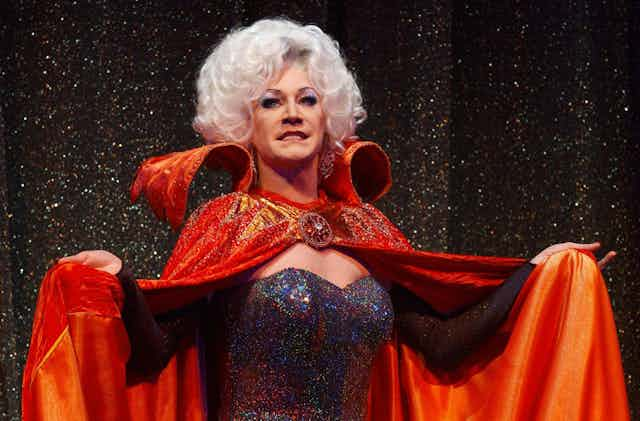Many among the British public will mourn Paul O’Grady, the beloved television host, philanthropist and drag queen, who has died at the age of 67.
He brightened up the stage and screen over the years with hilarious one-liners, quick wit and loveable charm, and heightened LGBTQ+ awareness through appearances as his catty but captivating alter ego, Lily Savage.
Numerous celebrities and public figures have paid tribute to O’Grady, including Camilla the Queen Consort, who stated that O'Grady’s “warm heart and infectious humour lit up the lives of so many”. Others remembered his “fearlessness”, evident in his public criticisms of Conservative MPs and government legislation.
O’Grady was also greatly remembered by an array of prominent LGBTQ+ figures and British drag talent. LGBTQ+ rights campaigner Peter Tatchell recognised O’Grady’s “admirable” campaigns for equality, while RuPaul’s Drag Race UK winner Danny Beard said:
It goes unsaid the work that Paul’s done for the queer community, for me personally, and for many other little gay boys who want to put a dress on.
Loud, proud and brave
O’Grady began his career at London’s Royal Vauxhall Tavern as Lily Savage in the early 1980s, where he became popular with queer locals. Lily demonstrated drag’s entertainment factor at times of uncertainty and rampant homophobia, and fans have spoken of a memorable instance when the tavern was raided during the Aids crisis.
Police entered with gloves, to which Lily hilariously responded: “Look, they’ve come to help with the washing up!” Lily would soon be making appearances at other club and theatre venues, such as the Bloomsbury Theatre and gay nightclub Heaven. However, she would gain major recognition through her regular appearances at the Edinburgh Fringe and on TV.
In 1997 she was given her own talk show on the BBC – The Lily Savage Show – with its popularity leading to arguably her biggest career break hosting the popular longstanding game show Blankety Blank (1997-2002). After this successful run, O’Grady began to step back from Lily and appear more as himself, with a number of popular programmes such as The Paul O’Grady Show and For the Love of Dogs.
A brief history of British drag
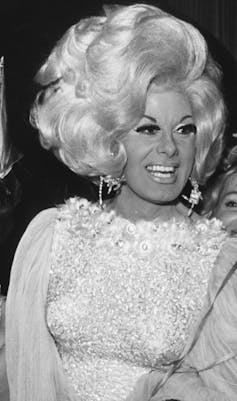
Lily Savage was often hailed as an inspirational artist within drag’s rich and cultural history in the UK. In his book Drag: A British History, Jacob Bloomfield notes its impact, and how drag artists have consistently asserted themselves as some of the most “renowned and significant entertainers of their day”.
The term “drag” dates back to Shakespeare with men playing women’s roles. From the 18th to the 20th centuries, drag was primarily confined to underground bars and vaudeville houses due to the criminalisation of homosexuality, with performers such as Princess Seraphina and Julian Eltinge demonstrating drag’s entertainment value.
In later years, drag would become more popular due to comedic queens such as Danny La Rue, Dame Edna Everage and Lily Savage, who would often be seen on mainstream television programmes. Today, prominent drag figures such as RuPaul, creator of the TV show RuPaul’s Drag Race and its numerous global spin-offs, demonstrate drag’s mainstream appeal. However, it is important to acknowledge the cultural history of drag and those artists, such as O’Grady, who paved the way for a wider social acceptance.
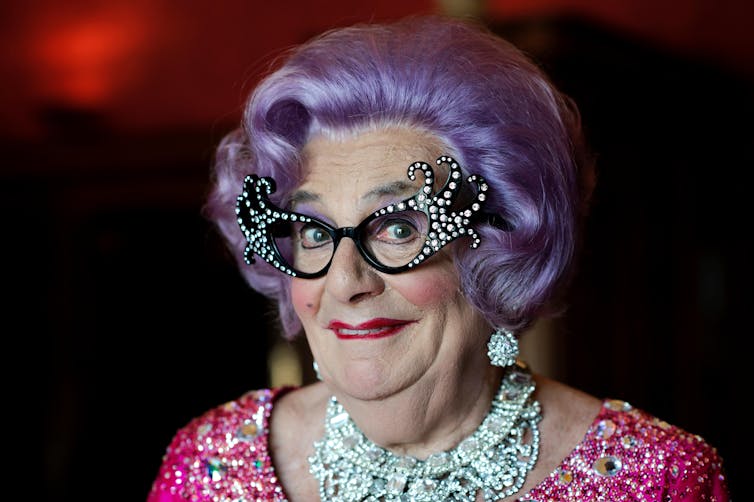
Drag under attack
It is also important to recognise O’Grady’s legacy at a time when drag is being attacked by far-right critics. They argue that the “sexualisation and inappropriateness” of drag represent a threat to children.
Numerous protests have occurred recently at Drag Queen Story Hour events at libraries across the UK. This led to users on internet forum Mumsnet, gender-critical feminists (women who believe that sex is biological and immutable and cannot be conflated with gender identity) and anti-drag critics calling for them to be cancelled.
Meanwhile, a series of UK drag shows organised by cabaret company Cababarave, aimed at mothers with young babies was cancelled after being targeted for its “abhorrence”. In the US, criticism of drag has escalated even further, with a recent law passed in Tennessee that bans drag and female impersonation in public.
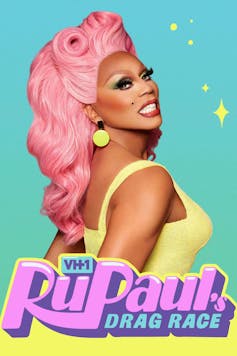
These shifts represent the threats currently posed to drag performers, so it’s worth remembering drag’s origins through performers such as Lily Savage. Drag is not only a unique display of artistry and a political standpoint; one of its primary functions has always been that of entertainment. Lily represented this profoundly, and it is important that the wider British public acknowledge drag performance’s popular past, particularly in uncertain times of shifting cultural attitudes towards drag artists and LGBTQ+ communities.
O’Grady’s dedication to media and charity work, as well as his contribution to the mainstream representation of LGBTQ+ people and drag artists will undoubtedly affect both heterosexual audiences and those who attended his shows, sharing a drink with Lily at a gay bar. Crucially he will be remembered by those who saw themselves represented on mainstream television at a time when queerness was still demonised.
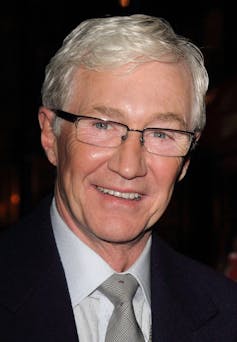
My own memory of O’Grady is when he starred in Snow White at the Bristol Hippodrome in 2003. I was only eight years old, mostly unaware of my own queerness at the time. I was asked to go on stage for an interactive segment of the show, and Lily was just as charismatic and captivating in person as she was from the back of the theatre. This moment will always hold a special place in my memory.
The LGBTQ+ community have lost a powerful force and groundbreaking icon, one that has undoubtedly changed the visibility of LGBTQ+ people in the UK. RIP “Lily of the Scally”.

